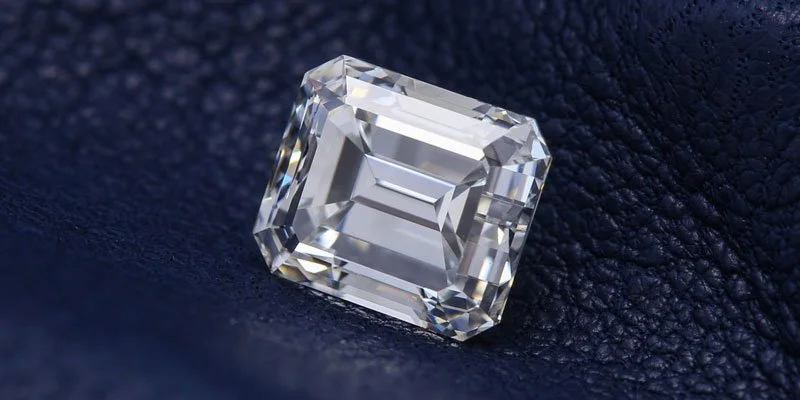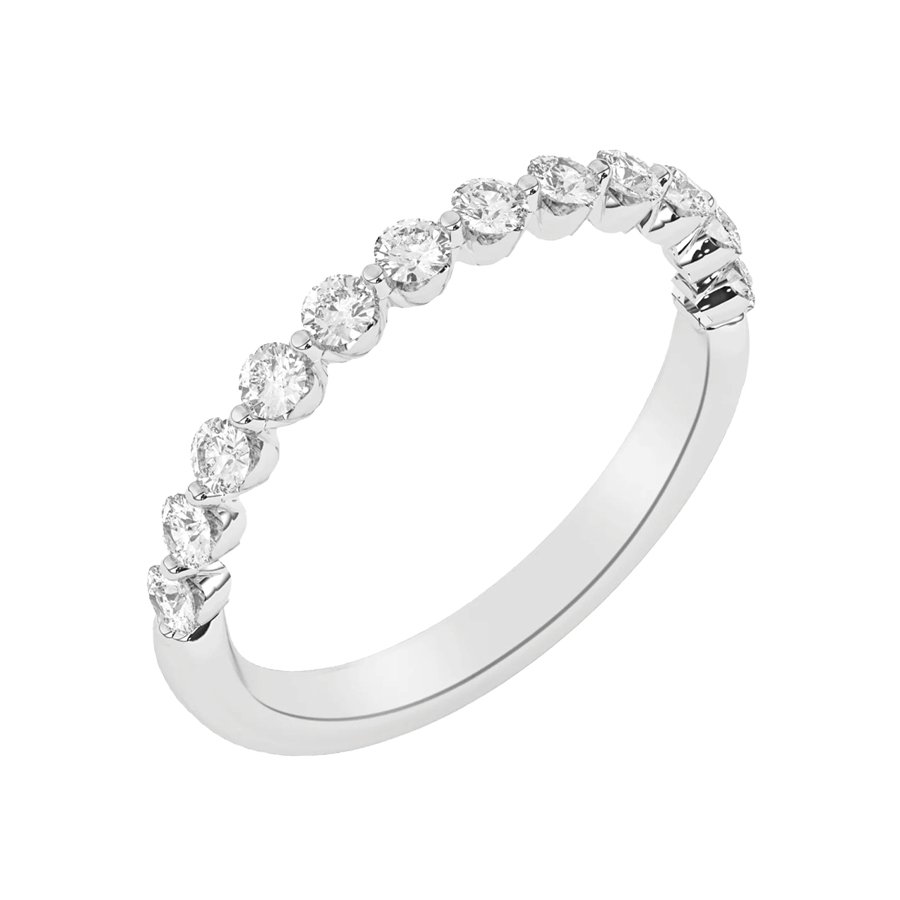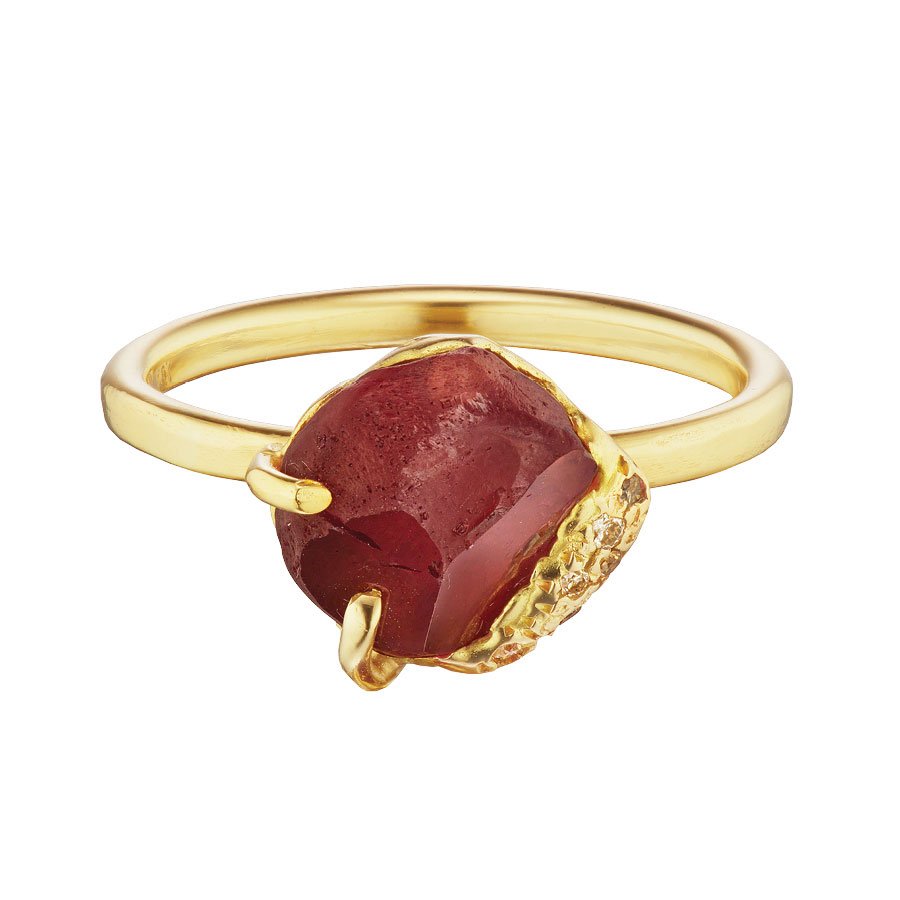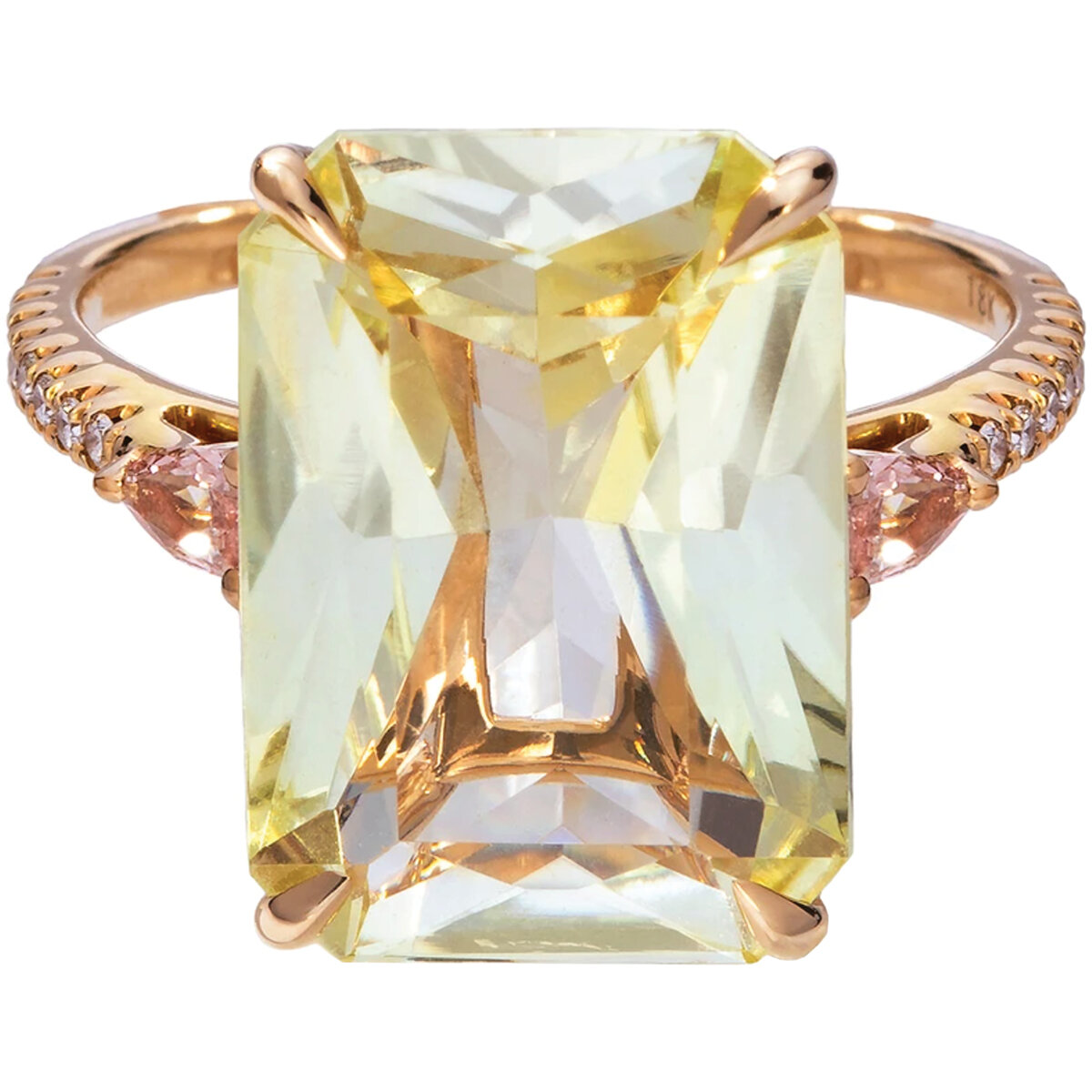How To Choose the Right Diamond or Colored Gemstone for an Engagement Ring
Selecting the right diamond or gemstone for an engagement ring is a big decision. Factors like durability and style go hand in hand with selecting jewelry that is responsibly sourced with people and the environment in mind.
As your fine jewelry guide, here is what I recommend considering before purchasing an engagement ring.
THE BEST GEMSTONES FOR AN ENGAGEMENT RING ARE DURABLE
The Mohs Scale of Hardness measures the durability of the gemstone from 1 to 10, with 10 being the hardest, and 1 being a mineral that is soft enough to be scratched by a fingernail.
Selecting gemstones on the harder side of the Mohs Scale for engagement rings will help you avoid damage or loss of stones that are precious to you.
Accidental bumps with hard surfaces can scratch, shatter, or crack softer, more brittle gemstones. A few of these that have special wear and care considerations are emerald, Tanzanite, opal, and pear. Wearing some of these every day is possible, but a designer who REALLY knows their jewelry ingredients will design a setting that protects such gemstones.
Learn more about why some jewelry “ingredients” are better suited as cocktail rings here!
THE TRUTH ABOUT NATURAL DIAMOND JEWELRY
First, an important caveat: you don’t have to get engaged or married to wear a diamond ring of any size or form.
Diamonds are great engagement and everyday rings - not because a 1948 marketing slogan says they are “forever”. It is because diamonds are the hardest gemstone - a 10 on the Mohs scale.
Beyond that, buying natural conflict-free diamond jewelry ensures both quality and accountability.
RESPONSIBLY SOURCED NATURAL DIAMONDS ARE: ETHICAL, TRACEABLE, AND CONFLICT-FREE
“Eco” and “sustainable” jewelry claims are ambiguous, overused, and may not mean what you think. Responsible sourcing is a holistic, more meaningful goal. In addition to being conflict-free and traceable, it means protecting people, their skills, and the natural environment. Two great examples of this are:
Australia: while the Argyle diamond mine is now closed, the land is being rehabilitated and returned to the traditional owners in accordance with their wishes. This mine produced Argyle pink diamonds, as well as an array of other colored diamonds.
Botswana: this is a brilliant example of how diamonds can create meaningful, positive change through vertical integration. Botswana is a vision of socio-economic empowerment with a business operating in partnership with a government and civil society. Investments are made in communities and benefits are shared.
SHOP:
CONFLICT-FREE DIAMOND RINGS + WEDDING BANDS
POST-CONSUMER RECYCLED DIAMONDS
For anyone interested in reducing their carbon footprint, post-consumer recycled diamonds are the best (and uniquely beautiful) option. As one of the world’s first art forms, jewelry has always been circular!
The curated diamonds you see above are antique and contemporary in origin from my diamond partner, Jay of Perpetuum Jewels. They have already incurred a cost in their environmental footprint as a primary commodity from a non-renewable and extractive industry. Regardless if they are 4 or 400 years old, Jay’s diamonds are certified as post-consumer recycled.
A diamond’s facets can determine what era a diamond was cut. Before the 20th century, diamonds were cut with eyes and hands. Today they are precision cut, informed by math and science.
By choosing post-consumer recycled diamonds (and colored gemstones), you are contributing to the progress of beating climate change. Why?
““These materials have already incurred a cost in their environmental footprint as a primary commodity from a non-renewable and extractive industry. The older the jewelry and its gems, the better for its recycling and environmental value as it re-enters the trade.” ”
BESPOKE:
DESIGN YOUR ENGAGEMENT RING
A NOTE ON LABORATORY-GROWN DIAMONDS
There is a LOT of greenwashing to unpack on the topic of lab-grown diamonds - even conscious consumers have been deceived.
It is important to note that the majority of lab-grown diamonds are mass-produced in India and China, using dirty coal with machines and processes using materials mined from the earth.
When it comes to the climate conversation, it is important to note that laboratory-grown diamonds are mass-produced gems that require an immense amount of energy to create.
For these reasons, environmental claims can be deceptive and are often unsubstantiated when comparing natural diamonds to lab-grown diamonds. The data on carbon pollution and greenhouse gas emissions is inconclusive.
When these comparisons are put forth, consider that lab-grown diamonds increase economic benefits for first-world countries at the expense of mining communities in developing countries. Consider who benefits most from lab grown diamonds?
From an economic standpoint, there is no question that lab-grown diamonds are vastly more affordable - especially for anyone seeking to purchase a home. Just be aware that laboratory-grown diamonds do not hold their value.
If affordability is a factor in choosing an engagement ring, read on for breathtaking alternatives that DO hold their value and have a positive social impact…
RESPONSIBLY SOURCED COLORED GEMSTONES
Diamonds are not the only gorgeous option as engagement rings or empowering rings to wear everyday!
There are several colored gemstones that are uniquely beautiful and durable to enjoy wearing to the office, ballroom, boardroom, brunch, and beyond! Among this array of juicy-hued possibilities are sapphire, ruby, spinel, garnet, and tourmaline.
Generally speaking, colored gemstones are more attainable options compared to diamonds, although there are a few exceptions.
Sapphire, at 9 on the Mohs scale, is especially alluring because it can be any color of the rainbow (including colorless) except red, which makes it a ruby! They are the same mineral species, corundum. While sapphires can be a wide range of price points, rubies can rival or be even more valuable than diamonds. The main factor that determines value for any gemstone is rarity.
Spinel is also a durable option at 8 on the Mohs scale. Its hues of red, blue, gray, purple, pink, and peach have a unique spark of fire and brilliance due to having a high refractive index.
Tourmaline at 7 - 7.5 is mesmerizing for having the optical phenomenon called pleochroism! This means it displays different colors depending on the angle and how the gemstone is cut. It can also be bi-colored or multicolored.
Garnet at 6.5 - 7.5 has the widest array of colors of any gemstone, in addition to displaying color change! Among the most coveted garnets are tsavorite, mandarin, and demantoid, but truly there are so many attainable and charismatic possibilities.
Below is a curation of coveted colored gemstone rings, thoughtfully designed by women!
SHOP:
COLORED GEMSTONE RINGS
Protect Your Engagement Ring for Peace of Mind
Insurance for your family heirlooms, engagement rings, and other fine jewelry is highly recommended. I’ve arranged for Jewelers Mutual Group to provide you with valuable information about protecting your pieces. Get your free quote.
Have questions about sourcing a responsibly sourced colored gemstone or diamond for an engagement ring that lights you up?
Begin your dream engagement ring journey, designed with intention and connection with a bespoke jewelry consultation.































